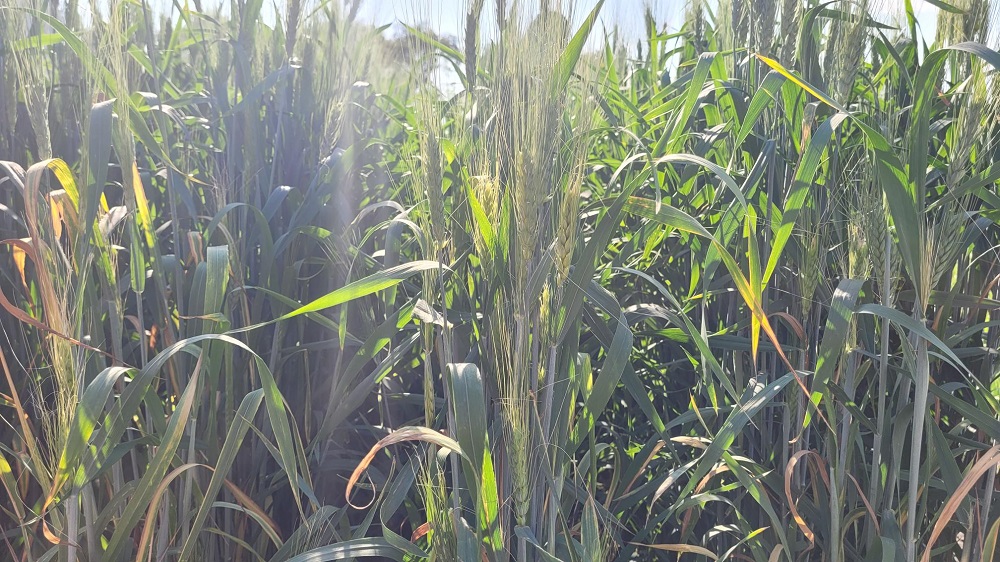A decrease to the average coverage per acre and average premium, as well as enhancements made to the weather-based support programs, highlight Tuesday’s morning’s announcement of the 2024 Crop Insurance Program.
In a conference call from the Saskatchewan Crop Insurance Corporation Head Office in Melville, Provincial Agriculture Minister David Marit noted the 2024 multi-peril crop insurance average coverage is decreasing to $389 per acre, largely due to a drop in insured commodity prices. As a result, the average premium is going down to $12.71 per acre. CEO of SCIC Jeff Morrow explained the drop in commodity prices impacts the dollar coverage, sent to SCIC by Agriculture and Agri-Food Canada (AAFC). AAFC also does a January price forecast for SCIC to set those insurable values.
Chief Agricultural Editor of SaskAgToday.com Kevin Hursh, who was on the conference call, noted the average insurance coverage announced is down from $440 per acre in 2023, and the average premium also down from $14.50 last year. The premium rate, Hursh says, is slightly up but not as much as he had expected.
“Premiums and coverage vary dramatically. Personally, I got Chickpea coverage in the $440 an acre range but the premium is in the $38 an acre range, so these are only averages – everybody will have to deal with their own numbers.” Hursh said in an interview following the conference call.
Enhancements made to Saskatchewan Crop Insurance Corporation’s weather-based programs now provide options to insure inter-crops and additional feed crops. A news release from the province notes “the Mixed Forage Rainfall Insurance Program protects any forage feed crop not previously covered under weather-based programs, including mixed forage, greenfeed and silage, if seasonal precipitation is below average. With the Intercrop Rainfall Insurance Program, annual intercrops intended for harvest can now be insured for below average seasonal precipitation.”
Coverage for the Forage Rainfall Insurance Program was beefed up to “better reflect the productive capacity of the insured acres and increased transportation allowance (which recognizes the costs associated with replacing lost feed). Producers can select from three levels of coverage, Low, Medium, and High, offering flexible risk management and related premium cost options.”
All of the weather-based programs have also been upgraded with an additional 38 weather stations, bringing the total to 224 across the province, ensuring most land is located within a 30 kilometre radius of at least one weather station for better and more relevant coverage for producers.
“You don’t see any real big gaps anywhere across the province,” Hursh said of the weather stations, which a map of it can be found on the SCIC website. “At 224, that’s certainly more accurate and applicable that what we’ve seen to date.”
One of the groups on hand for Tuesday’s announcement was the Saskatchewan Cattlemen’s Association. It’s CEO, Grant McLellan, was pleased to hear of the enhancements made to the weather-based programs, especially for Forage Rainfall Insurance, given that program was mentioned frequently during SCA-hosted Townhall meetings – which focused on how to support producers in drought conditions – around southwestern and west-central Saskatchewan during the summer of 2023.
“I think you see in the announcements today, particularly in the improvements to the Forage Rainfall Program, as well as the acknowledgement of including silage in the insurable groups here, there was a clear response and I think listening to the concerns that came out of those meetings directly from our producers,” McLellan said. “From our organization’s perspective, we are pleased to see these improvements, particularly on the livestock side because certainly those were the concerns that came up at those meetings around these programs.
“And we look forward to future improvements – we know that the pilot project with the Forage Rainfall Program is happening this year as well and so we’re hopeful that we’ll see continued improvements in these programs.” McLellan added.
The tweaks made to the suite of programs under Crop Insurance, Hursh believes, show the government “listened to the concerns of the livestock industry and the producers who attended those drought meetings last year.”
“The Crop Insurance Program has really been tailored to the grain and oilseed producer in the past, so the livestock sector is playing catch up and trying to get insurance that meets their needs and this shows there have been at least a few steps in that direction.” Hursh added.
In 2023, over 36-million acres in the province were insured by Saskatchewan Crop Insurance Corporation, including 86 percent of the seeded grain and oilseed acres in the province according to Minister Marit. He also noted approximately 14,200 yield loss claims were registered for the 2023 growing season. Morrow stated the number of claims equates to approximately $1.85-billion being paid out to producers.








